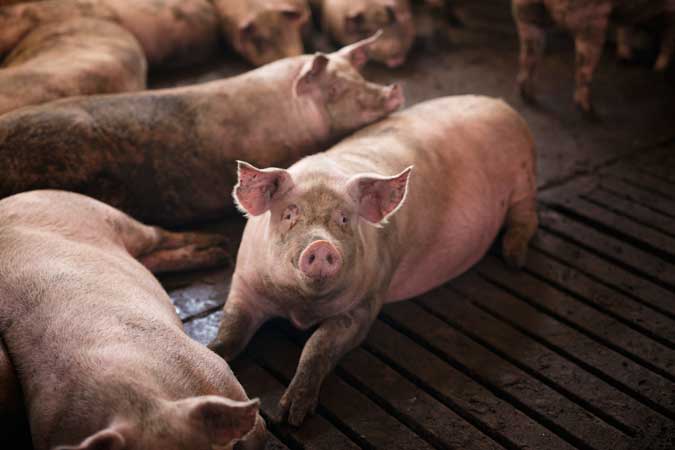THE DEPARTMENT of Agriculture (DA) has outlined the eligibility criteria for farmers in designated African Swine Fever (ASF) red zones who plan to seek government loans to rebuild their herds.
Agriculture Secretary William D. Dar signed Memorandum Order (MO) No. 45 on Aug. 9 which supplements Administrative Order No. 6 — signed on Feb. 10.
The MO sets the rules for implementing the recovery, rehabilitation, and repopulation assistance program for ASF-affected areas, as well as those not hit by the hog disease.
Mr. Dar said for hog repopulation, individual borrowers who wish to avail of government loans should be registered with the registry system for basic sectors in agriculture, while entrepreneurs, associations, and cooperatives should have at least 20% registered members. All should accept regular farm visits for health monitoring, surveillance, and biosecurity evaluation.
For hog farms inside red zones, Mr. Dar said the applicant must provide documentation that the farm has never been affected by ASF, as certified by the local government veterinarian.
“There are private individuals, entrepreneurs, associations, and cooperatives who want to establish new farms in red zones,” Mr. Dar said.
He added that the applicant must implement environmental swabs at one-week intervals within its premises and within a 500-meter radius of the site according to the DA’s sampling protocols and under the supervision of the local government veterinarian.
The farm should also have an up-to-date business permit and mayor’s permit, submit a letter indicating the interest to avail a loan program, and achieve farm biosecurity level one in compliance with minimum standards set by the Philippine College of Swine Practitioners.
In terms of physical structures to be established in the red zone, Mr. Dar said there is no need for a certification from the Bureau of Animal Industry to release the loan to be used in the construction of bio-secure facilities as long as the location of the farm to be established is in an area with no recorded ASF cases for more than 90 days.
Further, Mr. Dar said repopulation in the newly built farms in the red zone should have proof of engagement with private firms in the establishment.
He added that prior to the loading of animals into the bio-secure facilities, bioassays will be performed to confirm the absence of the virus in the facility and within the 500-meter radius where the farm is located.
Meanwhile, Mr. Dar said in a separate statement that the DA will continue to implement its hog repopulation and disease surveillance programs to revive the country’s swine industry from the ASF outbreak.
This is after the Philippine Statistics Authority (PSA) reported on Aug. 9 that the value of production of the farm sector fell 1.5% in the second quarter due to weaker output from the livestock and fisheries subsectors.
Based on the PSA report, production of the livestock and fisheries subsectors for the period dropped 19.3% and 1.1%, respectively. In contrast, crop production rose 3.1% while poultry output improved 2.5%.
“A favorable development that we are awaiting by end of August is the initial report on the efficacy of the ASF vaccine that we are testing in various commercial farms in Luzon. In fact, several ASF-affected areas in Batangas were recently declared free from the disease, and many more will follow suit,” Mr. Dar said.
Mr. Dar said he is confident that the DA will reach its palay, or unmilled rice, output target of 20.4 million metric tons (MT) for 2021, as a result of the 8.8 million MT produced in the first six months of the year based on PSA data.
“We expect the poultry subsector, which shared 13.5% to total production, to further rebound once the economy opens up in the second semester, given the increased demand during the Christmas holidays,” Mr. Dar said.
“We are also preparing countermeasures for the upcoming closed fishing season in the fourth quarter of the year by investing in aquaculture production, such as nurseries and hatcheries for bangus, tilapia, and shrimps,” he added. — Revin Mikhael D. Ochave

